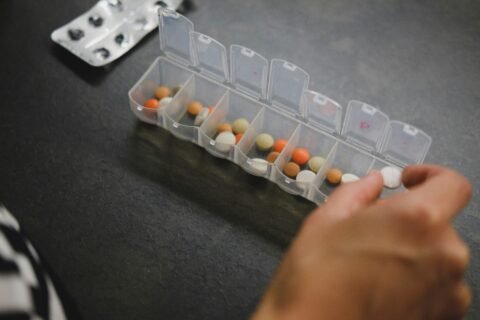Alcohol use disorder (AUD) and depression are two serious mental health conditions that often coexist, creating a complex and challenging scenario for those affected. The relationship between AUD and depression is bidirectional, meaning that one can lead to the other and vice versa. Understanding this link is crucial for effective treatment and support.
Depression is a mood disorder that causes persistent feelings of sadness, hopelessness, and a lack of interest in activities once enjoyed. It can affect one’s ability to function in daily life and can lead to various physical and emotional problems.
The Bidirectional Relationship
The link between alcohol use disorder and depression is complex and multifaceted. Both conditions can exacerbate each other, creating a vicious cycle that is difficult to break.
1. Alcohol Use Leading to Depression
Alcohol is a central nervous system depressant that affects brain chemistry. Chronic alcohol consumption can lead to changes in the brain’s neurotransmitters, which regulate mood. Over time, these changes can result in the development of depressive symptoms. Some of the ways alcohol can lead to depression include:
- Chemical Changes: Alcohol alters the balance of neurotransmitters like serotonin and dopamine, which are critical for mood regulation. Long-term alcohol use can deplete these chemicals, leading to depressive symptoms.
- Social and Environmental Factors: Heavy drinking can lead to social isolation, relationship problems, and financial issues, all of which can contribute to feelings of depression.
- Physical Health: Chronic alcohol use can result in health problems such as liver disease and cardiovascular issues, which can also contribute to depression.
2. Depression Leading to Alcohol Use
Individuals with depression may turn to alcohol as a form of self-medication to cope with their symptoms. While alcohol might provide temporary relief from feelings of sadness or anxiety, it ultimately worsens depression in the long run. Some of the ways depression can lead to alcohol use include:
- Coping Mechanism: Depressed individuals may use alcohol to numb emotional pain or to escape from negative thoughts.
- Increased Risk-Taking: Depression can lead to a lack of concern for personal well-being, resulting in increased risk-taking behaviors, including excessive drinking.
- Sleep Problems: Insomnia and other sleep disturbances are common in depression. Some individuals may use alcohol to help them sleep, which can lead to dependence.
Recognizing the Signs
Recognizing the signs of both AUD and depression is crucial for early intervention and treatment. Common signs of co-occurring AUD and depression include:
- Feelings of hopelessness, sadness, or emptiness that last for weeks or months.
- Significant weight loss or gain due to changes in appetite.
- Constant tiredness and lack of energy.
- Insomnia or excessive sleeping.
- Disinterest in activities once enjoyed.
- A strong urge to drink alcohol.
- Physical symptoms such as shaking, sweating, and nausea when not drinking.
- Failing to meet obligations at work, school, or home.
Treatment Approaches
Treating co-occurring alcohol use disorder and depression requires a comprehensive approach that addresses both conditions simultaneously. Here are some effective treatment strategies:
1. Integrated Treatment Programs
Integrated treatment programs are designed to address both AUD and depression at the same time. This approach ensures that both conditions are treated holistically, reducing the risk of relapse and improving overall outcomes.
2. Medication
Several medications can help manage the symptoms of both AUD and depression. These include:
- Antidepressants: Medications like selective serotonin reuptake inhibitors (SSRIs) can help alleviate depressive symptoms.
- Medication for AUD: Naltrexone, acamprosate, and disulfiram can help reduce alcohol cravings and manage withdrawal symptoms.
3. Behavioral Therapies
Behavioral therapies are a cornerstone of treatment for co-occurring AUD and depression. These therapies help individuals identify and change negative thought patterns and behaviors. Commonly used therapies include:
- Cognitive-Behavioral Therapy (CBT): CBT helps individuals recognize and change negative thinking patterns and behaviors related to both alcohol use and depression.
- Motivational Interviewing (MI): MI enhances motivation to change drinking behaviors and addresses ambivalence about seeking treatment.
- Dialectical Behavior Therapy (DBT): DBT is effective for individuals with severe depression and can help manage emotional dysregulation.
4. Support Groups
Support groups provide a valuable network of peers who understand the challenges of dealing with both AUD and depression. Groups like Alcoholics Anonymous (AA) and Dual Recovery Anonymous (DRA) offer support, encouragement, and practical advice.
5. Lifestyle Changes
Incorporating healthy lifestyle changes can significantly improve the outcomes of treatment for AUD and depression. These changes include:
- Regular Exercise: Physical activity can boost mood and reduce cravings for alcohol.
- Healthy Diet: Proper nutrition supports overall health and well-being.
- Mindfulness and Meditation: Practices like mindfulness meditation can help manage stress and reduce symptoms of depression.
Seeking Help
If you or a loved one is struggling with co-occurring alcohol use disorder and depression, seeking professional help is crucial. Early intervention can prevent the conditions from worsening and improve the chances of a successful recovery. A healthcare provider can provide a comprehensive assessment and recommend appropriate treatment options.

Daniel J. Morgan is the founder of Invidiata Magazine, a premier publication showcasing luxury living, arts, and culture. With a passion for excellence, Daniel has established the magazine as a beacon of sophistication and refinement, captivating discerning audiences worldwide.





